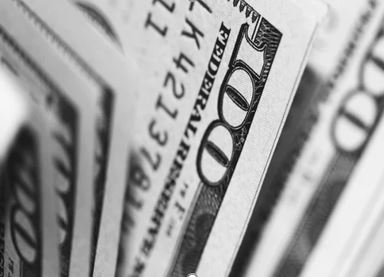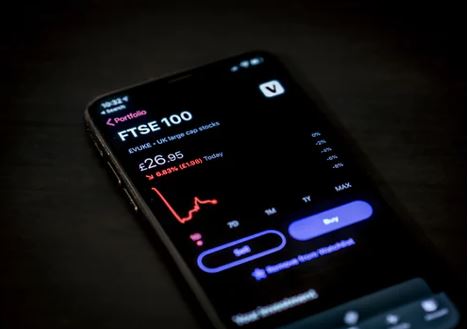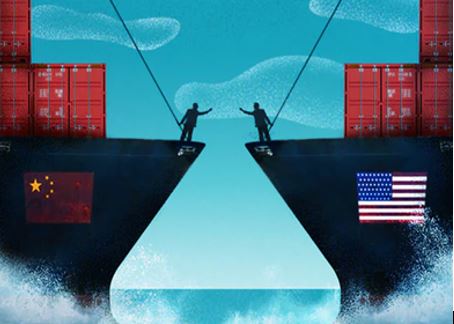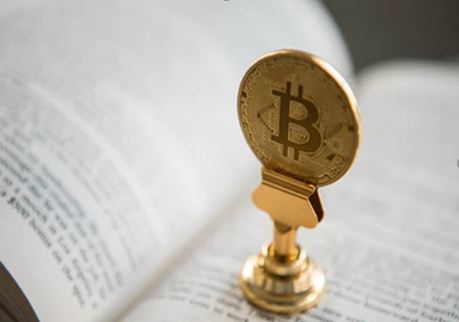
On 25 June 2020, Peking University HSBC Business School UK Campus (PHBS-UK) and China Construction Bank University London Academy (CCBU-London) jointly organised a webinar entitled, The Impact of Covid-19 on Banking and Finance. We were very honoured to have Professor Carol Alexander from the University of Sussex as our invited speaker. Professor Alexander is the Professor of Finance at the University of Sussex, and a Visiting Professor here with us at Peking University HSBC Business School. She is also the Co-Editor of the Journal of Banking and Finance. We were also extremely fortunate to have on our discussion panel 2 distinguished discussants, Mr Yang Aimin, the Chief Executive Officer of China Construction Bank (London), and Dr Alexis Stenfors, a Senior Specialist in foreign exchange and interest rate derivatives trading, from the University of Portsmouth, to lend their specialist insight on the topic.
In the webinar, Professor Alexander focused on the extreme monetarist economic policy implemented by the US in response to Covid-19 and its likely impact on banking and global financial markets, especially China. However, in order to better understand the policies and strategies, Professor Alexander stressed the importance of understanding how they were shaped under the governance of specific US Presidents, namely Franklin D. Roosevelt (1933 – 1945), Richard Nixon (1969 – 1974), Bill Clinton (1993 – 2001), and George Walker Bush (2001 – 2009), as well as their respective Chairs of the Federal Reserve, Marriner Eccles (1934 – 1948), Arthur Burns (1970 – 1978), and Alan Greenspan (1987 – 2006), whose implementation of these policies and strategies had a direct impact on banking and global financial markets.
President Roosevelt was elected during the height of the Great Depression and he was tasked with aiding the recovery of the US economy. In his ‘First New Deal’, Roosevelt devalued the dollar against gold prices in 1933 and changed gold and silver from currencies to commodities under the Gold Reserve Act and the Silver Purchase Act in 1934. Furthermore, in the 1932 Glass-Stegall Act and 1933 Banking Act, Roosevelt reformed commercial banks by preventing them from gambling with public savings to protect consumers. The 1933 Banking Act also saw the formation of the Federal Open Market Committee (FOMC) which controls the money supply by issuing and trading treasury securities in open market operations using the three tools of monetary policy that the Federal Reserve controls – open market operations, the discount rate, and reserve requirements. The FOMC is key in executing policies which would have direct impact on today’s financial markets.

President Roosevelt also banned Mark-to-Market (MtM) accounting in 1938 because it was regarded as a major cause of the Great Depression. However, interestingly, banks moved back to MtM practices during the 1980s and MtM was formally reinstated for banks in 2007 under President Bush. Under President Roosevelt, the financial world also saw the signing of the Bretton Woods Agreement in 1944, the establishment of the International Monetary Fund and the International Bank for Reconstruction and Development, which today, is a part of the World Bank Group. The chief features of the Bretton Woods system were an obligation for each country to adopt a monetary policy that maintained its external exchange rates within 1 percent by tying its currency to gold and the ability of the IMF to bridge temporary imbalances of payments. Naturally, the United States, which controlled two thirds of the world's gold, insisted that the Bretton Woods system rest on both gold and the US dollar.
After President Roosevelt, the 1950s and the 1960s saw the birth of monetarism, where the focus was on restricting the money supply to control inflation and the promotion of free market economies rather than the stablisation of exchange rates. The S&P rose from 2000 to 8000 in 15 years and by 1965, 60% of company stock was owned by the middle classes. However, only 6% of the profits were re-invested in the company; 45% went to shareholder dividends and the rest went to highly-paid executives.
However, things took a different turn from the start of the 1970s. In 1971, under President Nixon, too many US dollars were printed and Fort Knox contained only a third of the gold bullion needed to cover dollars held by foreigners. On 15 August 1971, under President Nixon, the United States unilaterally terminated convertibility of the US dollar to gold, effectively bringing the Bretton Woods system to an end and rendering the dollar a fiat currency. At the same time, many fixed currencies (such as the pound sterling) also became free-floating, and there was a transition to free exchange rates which saw stock prices plummet, sky-rocketing oil prices, bank failures, and inflation.

After President Nixon, between 1974 to 1993, the US economy prospered; the US GDP rose from $1 trillion to $7 trillion. That period of time also saw the prosperity of European countries and the formation of the European Union. At the time of its formation the EU GDP was $7 trillion, thus Europe and not China, was the main economic treat to US hegemony. Thus when Bill Clinton became the 42nd US president, in 1999, there was a repeal of the 1933 Glass-Stegall Act and the 1934 Banking Act (cf. President Roosevelt), where commercial banks are now allowed to gamble with consumer saving, there are no longer any divisions between commercial and investment banks, and a huge increase in trading derivatives.
In the new millennium, under President George W. Bush, following the recession in 2001-2, the derivatives notional exceeded more than ten times the world’s GDP. This was because the longest-serving Chair of the Federal Reserve, Alan Greenspan, kept interest rates too low for too long. As a result, there was an expansion of interest rate swaps which were driven by accounting rules discrepancies. Thus, notional traded on financial derivatives soared all banks searched for yield, which in turn led to a massive increase in sub-prime debt. This snowballing effect forced all banks to underwrite and trade in collateralized debt obligations (CDOs) and investment banks had to sell credit default swaps (CDCs) on those CDOs. As CDOs and CDCs are toxic debts, 2008 saw a huge credit crisis and the collapse of investment banks. However, the credit agencies colluded with investment banks, where the senior and mezzanine tranches retain good credit ratings, while these toxic CDOs and CDCs were exported to Japan and Europe. Thus by 2011, the EU saw itself entering the European sovereign debt crisis.
In order to save the banks, the US government enacted Quantitative Easing (QE), where the Federal Reserve bought $1.75 trillion of bank debt, mortgage-backed security (MBS), and Treasury notes, and bailed out several large institutions (banks, mortgage associations, insurance companies, car manufacturers) in 2008-9. The next 5 years, saw the Federal Reserve pumping trillions of dollars into the banking system until the US economy began to seemingly ‘recover’. Following the banking crisis, the EU’s GDP fell from $15.5 trillion to $13.5 trillion while the GDP in the US continued to grow under President Obama. During that time, the world also saw a remarkable GDP growth in China under Presidents Hu Jintao and Xi Jinping. As a result, China and not Europe, became the main economic threat to US hegemony.

The year 2016 saw the beginning of the reign of President Donald Trump. In 2017, the FOMC stopped Quantitative Easing which led to the deflation of the Federal Reserve balance sheet, which in turn caused the squeezing of the money market, and eventually causing a bull market in US stock stalls. Further, in 2019, the FOMC cut interest rates from 2% to 1.5%, a first since 2008. The FOMC also issued $60 billion T-bills per month, which were all bought back by the Federal Reserve in repurchase (repo) operations. Thus, this bring the first half of the webinar into a nice summary where Professor Alexander posed to the audience two very thought-provoking questions: Did the US economy ever really recover from the financial crisis of 2008? Or has it just been propped up by continual rounds of Quantitative Easing?
The second half of the webinar brought us into the current global crisis: the Covid-19 pandemic in 2020 where global lockdowns plunged countries across the world into an economic slowdown. As such, the very important question now, as posed by Professor Alexander, is can the Federal Reserve prevent another credit crisis? The current picture does not look promising. The real household economics in the US paint a dark picture: there is a $14.3 trillion of household debt in new CDOs, and this toxic debt is not limited to MBS, they come in the form of car loans, credit card debts, and student loans, which have all been massively securitized by banks and P2P lenders. The Federal Reserve banks and Blackrock are buying $300 billion of securities backed by consumer loans, as well as buying new corporate debt. Since 2008, the Federal Reserve has expanded their balance sheet from $0.8 trillion to $7.1 trillion. Further, in response to the Covid-19 pandemic, the Federal Reserve increased money supply massively to fund repo operations, required reserves eliminated by the Federal Board, and cut the interest rates on excess reserves (IOER) to 0.1% in March 2020. Essentially, all three tools were employed to achieve maximum, simultaneous effect.
Professor Alexander discussed with the audience, at length, of how such a move, where the simultaneous use of all three policy tools was unprecedented. This move poses a threat to money market funds as the US money market sector provided $4.8 trillion of liquidity for short-term funding needs and it also accounts for 14% of total assets in the US mutual fund industry. Thus, with zero (or negative) interest rates, this sector is now threatened by investor withdrawal. Furthermore, Professor Alexander highlighted that this move, combined with algorithmic trading are used to manipulate the prices of traditional ‘safe-haven’ assets such as gold and bitcoin. As a result, these measures are artificially increasing the prices of US assets and manipulating the US dollar.

In addition, Prof Alexander highlighted how, since the Great Depression of the 1930s, currency and gold price manipulation, and sustained economic stimulus have been deployed to mask the true weakness of the US economy. The FOMC Covid-19 operations simply increases the wealth of the wealthy because when the wealthy invest a large fraction of their income, there is an inflation in the US financial asset price. It will also result in a massive rise in US unemployment which in turn leads to a price deflation in consumables and real estate prices.
The final section of the webinar looks at how these economic policies of the US affect China. Professor Alexander highlighted to the audience how the results of these US economic policies have a distinct effect on the Chinese economy. A high unemployment rate in the US results in a decrease in domestic demand for US goods and services. As the US dollar is already being manipulated lower to boost US exports, Chinese exports to the US decreases in turn. Professor Alexander warns that it is expected that there will be a Yuan-US dollar appreciation and declining exports. This would in turn lead to an increase in the unemployment rate in Chine and an inflationary pressure of debt. However, as Professor Alexander points out, the light at the end of the tunnel for China is her financial markets; they are the key to China’s economic prosperity. China banks increased their loans to corporations by 11.5%. This in turn boosts an increase in new infrastructure projects, increased production, and increased employment. China also enacted an export stimulus where an increase in rebate rates to help exporters who are facing slumping demands. China also laid out a new economic policy where the People’s Bank of China is increasing liquidity by decreasing interest rates and decreasing the banks reserves while simultaneously guaranteeing company loans.
Professor Alexander’s webinar was followed by comments and questions from our distinguished discussion panelists: Mr Yang Aimin and Dr Alexis Stenfors.
Both Mr Yang and Dr Stenfors expressed their appreciation to Professor Alexander for her through and refreshing webinar on a financial market dominated by the US. In particular, Mr Yang talked about how pleased and delighted he was that CCB University – London Academy, working in collaboration with PHBS-UK, hosted a webinar of such high caliber. He expressed hope that there will be more future collaborations between the two institutions.
In his comments, Mr Yang highlighted how this talk was particularly on point for him because during the time of the banking crisis, he was responsible for China Construction Bank’s foreign currency denominated investment portfolio. He shared that the US not only sold toxic CDOs to Europe and Japan, they also sold them to China; Many Chinese investors suffered huge losses. Mr Yang commented that the only reason he narrowly escaped that crisis was because he strongly believed in fundamentals – triple-A rated agencies could never yield such purported high returns.
In addition, Mr Yang indicated that he is of the belief that the chances of the US Federal Reserve preventing another credit crisis is very low. Even with the US Federal Reserve increasing the liquidity to cope with short-term shorts, Mr Yang also indicated his skepticism that the US Federal Reserve could cope in the long run. As for investors, Mr Yang cautioned that this climate could be increasingly challenging for them as they could run into the case of buying the wrong kind of assets. As for Professor Alexander’s comments on China’s economy, Mr Yang agrees that the Chinese government was very quick in its response to the Covid-19 pandemic, especially the POBC’s careful management of monetary policies.
Our second discussant, Dr Stenfors, commented that Professor Alexander’s webinar struck him in two ways; Firstly, it occurred to him how the countries (i.e., their central banks) manipulate currencies and markets indirectly. Secondly, how the US stock market is disconnected from reality. In particular, Dr Stenfors expressed surprise at how quickly the US stock market bounced back after the initial shock of Covid-19.
On another note, Dr Stenfors also expressed his skepticism (cf. Keynes’ Investment Philosophy) on defining the fundamental value of something like stock or bitcoin because it is linked to the state, and there is no such thing as a free market for currencies because they always have a link to the state and the central bank has the monopoly. In response to the current crisis, Dr Stenfors also commented how investors would see sharp changes in the market such as oil prices going negative, which was unthinkable a few months before. Thus, he cautioned that investors would need to take a step back as global markets will see more government intervention in the coming days.
All in all, it was a very informative webinar where everyone in the audience learned a lot from our speaker Professor Alexander about the formation and execution of the extreme monetarist economic policy implemented by the US in response to Covid-19 from a historical perspective, and its likely impact on banking and global financial markets, especially China. In addition, the comments from our specialist discussants, Mr Yang and Dr Stenfors, were personal, relevant, and especially on point. It is with great pleasure that PHBS-UK could collaborate with CCB University - London Academy in organizing this webinar. We hope that there will be more of such engaging learning collaborations in the future.







